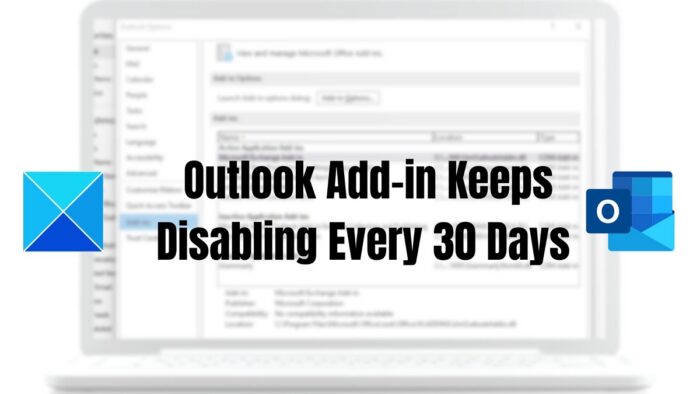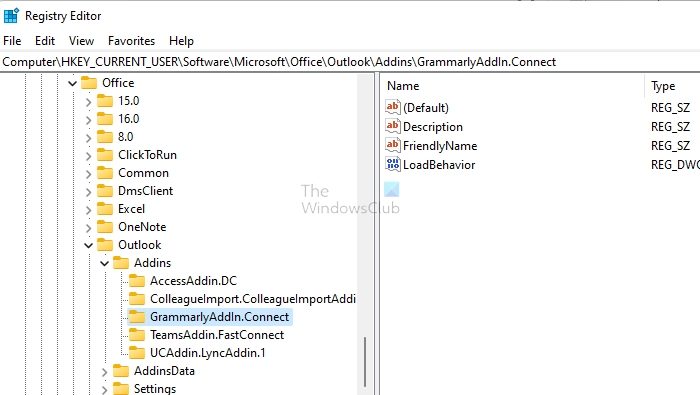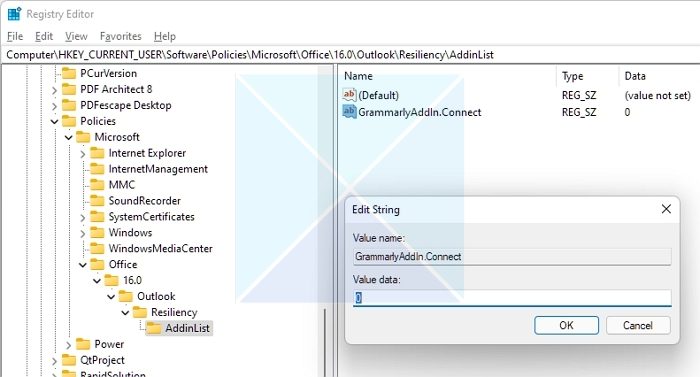Our personal and professional lives are now made convenient with Microsoft Outlook. Thus, Outlook add-ins improve the program by boosting productivity, eliminating troublesome spam, and managing your inbox. Thus, add-ins make emailing easier and more effective in Outlook. However, it has been reported that Outlooks keeps disabling the Add-in every 30 days or less. So in this article, you will find a couple of steps to help you enable add-ins without manually enabling them every few days.

Why does Outlook keep disabling Outlook Add-ins?
In certain cases, Microsoft has put several security precautions to stop slow add-ins from operating inside Outlook. Nevertheless, Outlook mistakenly labels add-ins as lethargic and disables them frequently. If this is not fixed immediately, Outlook can disable them indefinitely without allowing users to enable them again through the user interface. Here, the disabled add-in is not to blame. Outlook may be too hostile in this situation.
How to find Outlook add-in’s ProgID?
Before we go ahead with the solutions, we need to find the Program ID of the Outlook Add-ins. To find an add-in’s ProgID, use the Registry Editor on the client machine where the add-ins were installed:

- Type Regedit in the Windows Run prompt (Win + R), and press the Enter key to open Registry Editor.
- Navigate to the following path:
HKEY_LOCAL_MACHINE\SOFTWARE\Microsoft\Office\Outlook\Addins
or
HKEY_CURRENT_USER\SOFTWARE\Microsoft\Office\Outlook\Addins
Each subkey of one of the keys mentioned above is named with the ProgID of the relevant add-in. In this case, GrammarlyAddIn.Connect is the Program ID.
Fix Outlook Add-in keeps disabling every 30 days
Once you have the Program ID, you can use any of these methods to ensure Outlook doesn’t disable Outlook Add-in every 30 days.
- Registry Changes
- Group Policy
You will need admin permission to get these done. Also, create a system restore point before making any registry changes. If you accidentally delete or modify, you can always bring your PC back to its normal state.
1] Registry Changes
There are ways to enable add-ins to stay permanently enabled by generating the following registry value. Based on your office version, open Registry Editor, and navigate the following path. There you need to create or modify the mentioned values.
Go to the following path based on your Office version. You can create the Keys if they don’t exist.
Outlook 2016 and newer:
HKEY_CURRENT_USER\Software\Policies\Microsoft\Office\16.0\Outlook\Resiliency\AddinList
Outlook 2013:
HKEY_CURRENT_USER\Software\Policies\Microsoft\Office\15.0\Outlook\Resiliency\AddinList
Right-click on the right side of the AddinList, and create a new String Value. Name the string the same as the Program ID. Once done, double-click on the Program ID and set the value as 1 to keep it permanently enabled and 0 to disable it permanently.
Here is what happened for Grammarly Add-in. I created all the folders or Keys under Microsoft i.e., Office > 16.0 > Outlook > Resiliency > AddinList. Then I created the string with the name as GrammarlyAddIn.Connect is the same as the name we saw during Program ID retrieval.

Once done, double-click on it and set the value as 1. Close the Registry. Open Outlook, and check if the Add-in is working as expected.
So, after updating the registry from the instructions and copying/pasting the add-in app’s registry ID, your work here is done, and you must wait 30 days to see if the changes have been applied or not. You can try changing the date to the future and checking if the add-ins remain enabled.
You can also set the value as 0 and check if the plug stops loading. This means the method is working as expected. When you set it as 0, the plugin is available under the Disabled section of Outlook Add-ins.
2] Group Policy
System administrators can use group policy to set up a higher level of add-in control. Since the Group Policy will always prioritize user settings, users are not permitted to alter group policy-configured add-in settings.
Microsoft offers Microsoft Office ADMX templates. You can download and install this and then manage individual PCs using this. The template offers a policy with the name—List of managed add-ins. The ProgID of the Outlook add-in must be specified.

After installing the template, you can find this in the following path in the Group Policy Editor.
User Configuration/Policies/Administrative Templates/Microsoft Office 2016/Miscellaneous
The template is available for Enterprise, Office LTSC 2021, Office 2021/19, and Office 2016 and also includes the OPAX/OPAL files for the Office Customization Tool (OCT) for Office 2016.
Read: How to enable, disable or remove Outlook add-ins
After making changes to the registry and modifying the settings in the group policy, your add-ins on Outlook should stay put for more than 30 days without having to re-enable them manually.
If Outlook finds any issues with the add-ins you have installed, you can delete and reinstall an add-in. Contact the supplier of the add-in if that does not resolve the issue. By choosing File > Add-ins, you can typically identify the firm that created the add-in. The provider column contains a listing of the add-in source.
Why does Outlook disable add-ins?
If Outlook thinks an add-in is interfering with Outlook’s functionality, it may occasionally disable the add-in. Sometimes, the disabled add-in is not to blame. The Outlook may be too tough in this situation.
How do I manage add-ins in Outlook 365?
To install add-ins, open Outlook and select File > Options. Choose the type of add-in you want. Select Go. Choose the add-ins you want to upload, load, or remove. You can also browse to find the add-ins you want to install.